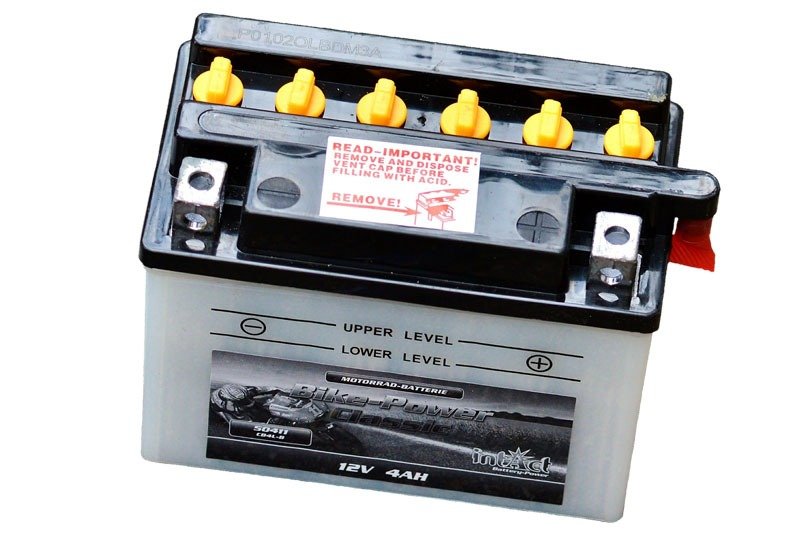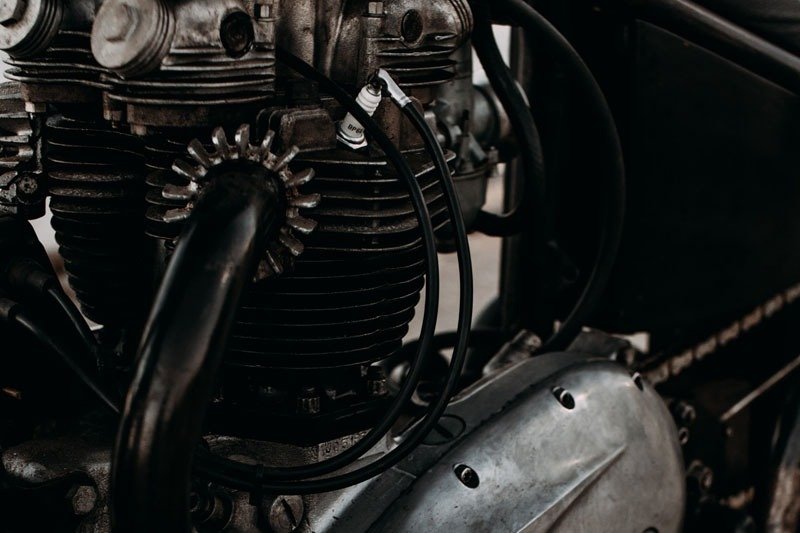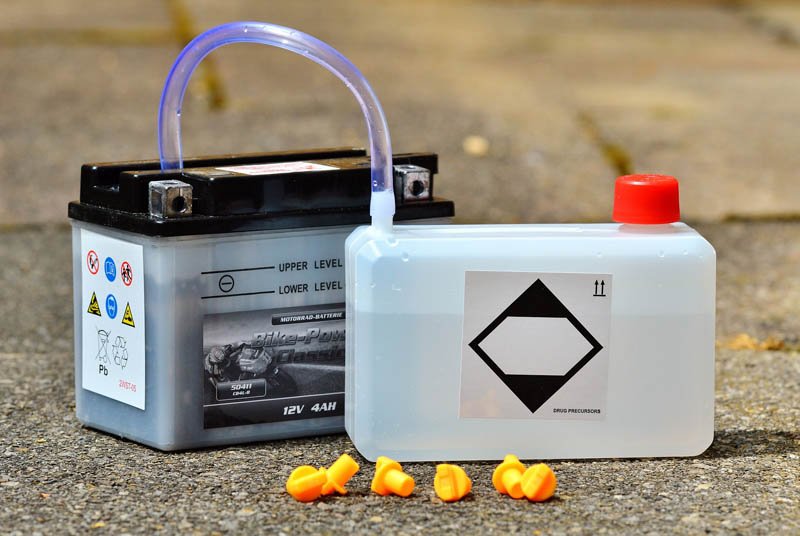Getting your snowmobile’s track adjusted correctly doesn’t have to be complicated. In this guide, we’ll show you the tools, step-by-step instructions, and troubleshooting tips for all major brands — Polaris, Ski‑Doo/Lynx, Arctic Cat, Yamaha, and more. If you do it right, your snowmobile will run great quickly. Why Track Tension Matters Track tension directly affects […]

How Long to Charge a Motorcycle Battery (Unique Guide 2025)
Motorcycle batteries, like automobile batteries, are 12-volt batteries. motorbike batteries can be entirely drained pipes after time, specifically when riding the bike periodically. Besides, motorcycles call for billing and maintenance during the cold months.
If you find yourself with a dead battery, you can get it back to operating condition by connecting it to a battery charger.
So, How Long to Charge a Motorcycle Battery?
One ought to think about the period from 12 to 20 hours. Figures that are more precise depending on the battery and battery charger type as well as quality.
In this article, we look at lots of commonly asked concerns about motorcycle batteries, the best means to charge them, and, certainly, for how long that will take.
Table of Contents
Common Types of Motorcycle Batteries

Motorcycle Battery
Not all motorcycle batteries are the same. Just just like your cars and truck and various other battery-powered items you use frequently, you need to have the appropriate battery for the tools. The most effective means to tackle this is to make sure you follow the bike producer's guidelines on what battery will certainly work best with your bike.
Once you know what kind of battery you require, you can identify just how to finest take care of it. The battery producer will have certain directions regarding the charging needs and other special instructions.
Motorcycle batteries are generally of four kinds.
Lead Acid Motorcycle Batteries (aka Wet cells, traditional batteries)
Lead Acid or conventional motorbike batteries can normally be differentiated by a row of plastic stoppers in the top. Usually, there are 3 stoppers in a 6-volt battery & 6 stoppers in a 12-volt battery.
This kind of battery normally has greater & lower battery acid degrees on the front. And, they have a white/opaque plastic reduced case.
Conventional/lead-acid batteries hold the battery cell's electrolytes in a fluid acid. It will give off Hydrogen gas when billing or releasing (It is very explosive and toxic!!).
These batteries need to be occasionally checked and topped up to the high-ranking mark with Pure water. Because the water section of the battery acid gets consumed in time.
Gel Cell Battery
Gel Cell battery is a kind of sealed lead acid battery utilized in motorcycles. It consists of qualified electrolyte-- sulfuric acid combined with fumed silica that makes the mass gel-like and also immobile.
Unlike wet lead-acid batteries, these batteries do not need to be maintained upright.
Gel batteries likewise do not have any electrolyte dissipation, spilling, or corrosion problems. (These are common with wet-led acid batteries.)
These batteries boast greater resistance to resonance, shock, and extreme temperature levels.
Bear in mind that gel cell batteries are charged with a trickle battery charger as opposed to a fast battery charger.
AGM (Taken In Glass Floor Covering) Battery
AGM or Soaked up Glass Mat battery is one of the most common sorts of lead-acid batteries used in motorcycles.
It is a covered and complimentary battery that does not need to be covered up with water like gel cell batteries.
Also, similar to a gel cell battery, you do not need to keep it in an upright sitting.
These batteries are immune to warmth and also resonance, hence reducing failure rates in motorbikes.
The benefit of AGM batteries over gel cell batteries is that they provide similar performance, yet set you back much less than gel cell batteries.
Lithium-ion Battery
A lithium-ion battery is a modern type of rechargeable battery. Nowadays more and more motorcycles start to use this kind of battery.
It has lighter weight, smaller size, and more efficient than traditional lead-acid batteries. This makes the motorcycle easier to handle and can even improve performance.
Besides, lithium-ion batteries charge faster, hold power longer, and last more years.
What's more, they also perform well in cold weather and regions. Motorbikes can be started quickly and easily.
In addition, these batteries require less maintenance and are more environmentally friendly.
However, they usually cost more upfront.
If you want better reliability and performance, the lithium-ion batteries are a smart choice.
Though there are other types of motorbike batteries readily available. The four batteries reviewed above are most typical and extensively used.

Charge a Motorcycle Battery
How Long to Charge a Motorcycle Battery
| Battery Type | Charging Time Needed |
|---|---|
| Wet Cell (Lead-Acid) Battery | 6-24 hours |
| AGM (Absorbent Glass Mat) Battery | 4-6 hours |
| Lithium-ion Battery | 1-2 hours |
When you're billing your bike's battery with chargers, the amount of time it requires to fully charge your battery depends upon just how level it is. As a general guideline, a healthy battery that is level can be completely charged within six to twelve hrs; however, often it can use up to 24 hr.
Motorbike and scooter batteries, like vehicle batteries, are 12-volt batteries. A new lead-acid battery in good health will certainly take in between 5 and 8 hrs to charge the bike's battery to 70%. To obtain the battery fully charged, it could take one more 7 to 10 hours. When you accumulate those optimums, it can occupy eighteen hrs to fully bill a brand-new battery, depending on how flat it is.
This moment might vary relying on the age and health and wellness of your battery. However, as a result of the automatic float turn on motorcycle battery chargers, you won't have to worry about overcharging your battery. The LED indications will merely let you understand when your battery is adequately or fully charged. It's as simple as that!
Key Factors That Affecting Your Motorcycle Battery Charging Time
Battery Type & Chemistry
- Lead‑acid (flooded, AGM, gel) batteries charge slower. The final 20–30% takes longest due to reduced chemical reaction speed.
- Lithium‑ion batteries charge faster but need a dedicated smart charger to avoid damage.
Battery Capacity (Ah) & State of Charge
- Higher amp‑hour (Ah) ratings require more time at the same charge current.
- A deeply discharged battery (below 20% SOC) will take longer than one at 50% SOC.
Charger Type & Charge Rate
- Simple chargers supply constant current or voltage. They’re safe but slow.
- Smart chargers monitor voltage/temperature and taper current—fast to 80%, then trickle to 100%.
- Trickle chargers are low‑current maintainers, ideal for seasonal storage.
Environmental Temperature
- Chemical reactions slow in cold weather. Charging at 0–10 °C may double charging time.
- High temperatures can speed charging but risk over‑heating and damage.
Battery Age & Condition
- Older batteries with sulfation or low capacity hold less charge. They accept current more slowly and may never reach full capacity.
- Regular maintenance (clean terminals, top up water in flooded cells) ensures optimal charging.
Tips to Optimize Motorcycle Battery Charging Time
- Use a charger matched to your battery type.
- Charge indoors at moderate temperature (15–25 °C).
- Keep batteries clean and well‑maintained.
Important Considerations When Charging Your Motorcycle Battery:
Use a Motorcycle/Trickle Charger:
It is better to use the original charger that came with your motorcycle. If the original charger is damaged or lost, then use the charger matched to your battery type. On one hand, these chargers are designed to deliver lower amperage while charging. On the other hand, they can prevent overcharging, which can damage the battery.
Charge in a Ventilated Area:
Always work in an open garage or outdoors. Hydrogen gas can build up and become explosive in sealed spaces.
Clean and Inspect Terminals:
Check for corrosion and tighten connections before charging. Good contact ensures the charger senses the battery’s real voltage.
Connect to the Right Polarity:
Attach the red clip to the positive (+) terminal and the black to the negative (–). Reversing them can damage the battery or charger.
Watch the Temperature and Battery Health:
Avoid charging your motorcycle's battery in extreme heat or cold environment. If the battery is swollen or leaking, replace it—charging a damaged cell risks failure or fire.
Monitor the Charging Process:
Many riders usually charge their motorcycle's battery in the night. Considering this, we advise you use a charger designed for it or one with automatic shut-off.
Follow the Manufacturer's Instructions:
Always refer to your battery and charger's documentation while charging the battery. Because they can provide you a more specific charging recommendations.
Consider the Charging Time When Riding:
While riding can help maintain the battery charge, it may not fully charge a depleted battery.
Charging While Riding:
Normal riding may not be enough to fully charge a battery after it has been completely depleted.
What Is The Very Best Way To Charge A Motorcycle Battery
The most effective way to preserve your bike battery charge is with a float charger. Extremely comparable to a trickle charger, a float charger supplies a slow-moving, consistent stream of low-voltage electrical energy, as well as turns off when it's done.
This is best corrected over a longer period of time. One alternative for weekend motorcyclists is to place the battery on the float battery charger during the week which method you are completely billed for a weekend break of riding.
A great guideline is to eliminate the battery from the motorbike and area it in a trendy and well-ventilated location. Although that a float battery charger will certainly switch off when the battery is billed, you will still require to check on it routinely as well as make certain that everything is working correctly.
You can bill a motorcycle battery with a basic charger, nevertheless, you will require to ensure the voltage will not exceed what the battery can handle.
Providing also solid of a charge or just delivering the fee as well swiftly can really harm the battery otherwise worse.
Pro-Tips:
◾ Always follow the producer's directions when attaching the battery to the charger. By not complying with the directions you might trigger permanent damage to the battery and also the charger.
◾ If the battery obtains actually hot TURN OFF the charger as well as allow whatever cool down. Excessive heat is an excellent sign that something is wrong. Permitting the battery to get too hot might result in an explosion.
◾ If the battery is cigarette smoking or triggering, TRANSFORM IT OFF! If this happens there is certainly a glitch.
How Long Do Motorcycle Batteries Last
A covered AGM battery will certainly last 3 to 5 years on average, however, a lifetime of as much as 8 years is possible. A conventional acid-filled battery has a lifetime of 2 to 3 years, yet a lifetime of 5 years is feasible.
There are several variables that affect the lifetime of your motorcycle battery.
◾ Climate conditions-The optimum ability of the battery obtains smaller as it gets cooler. The average temperature is best for a motorcycle battery. Storing your motorbike in a warmed garage will certainly not just avoid rust off your bike yet likewise aids to preserve the battery.
◾ Usage of the battery-A battery that is utilized on a daily basis has a larger opportunity to endure longer. Batteries that sit still most of the moment, normally have a shorter lifetime.
◾ Electronics-Riding with a lot of electronic devices can worry a battery as well as drain it much faster than normal. Are you making use of radio, phone charger, navigating system, or extra lights? The battery could have a hard time keeping up with all these systems due to the fact that it drains the battery. This can shorten the lifetime of your battery also.
When you require to communicate details throughout a small dilemma like battery failure, you require the helmet Bluetooth intercom that is created riders by riders. Fodsports Bluetooth communication system will certainly maintain the info flowing, whether it's to check your battery, get gas, or pause.
How To Maintain Your Battery

Maintain your motorcycle Battery properly
Image Source: Pixapay
#️⃣ Keep the individual cells in your battery filled up to the indicated electrolyte levels with pure water. This sort of upkeep is done throughout the riding year. The more you ride, the much more often it ought to be inspected.
#️⃣ Remove your battery from the bike and also store it on wooden, plastic, or various other non-conductive surfaces, in a place that does not obtain below 32 levels. This would be a lasting upkeep product, such as for winter months storage space. Nevertheless, if somehow you understand you won't be riding the bike for a long time, this would be for ANY long-lasting storage space.
#️⃣ Link up your battery to a bike battery charger, to keep it at an optimum level of charge. This would be part of winter season maintenance, however, could be utilized throughout the riding months, even while the battery is mounted on the motorcycle when the bike is not utilized frequently.
#️⃣ Equally, as vital as preserving a fee as well as seeing to it the battery remains sprinkled is the need to maintain the battery clean. This can be particularly real with a motorbike battery.
Exposure to dirt, dust, and various other debris can increase the battery's rate of discharge and also result in early failure. Cleansing your battery can be as straightforward as utilizing a tidy, completely dry fabric to get rid of any dust or dirt accumulation.
Sometimes rust can develop which requires a bit much more effort to get rid of but still worth it when it comes to lengthening your battery life.
More tips
5 Steps To Clean Rust Out Of A Motorcycle Gas Tank

Motorcycle mechanic, writer. Interested in motorcycle gear for years. Like to stay up to date with the newest products and techniques of the motorcycle.
Motorcycle riding is all about the sense of freedom, adventure, and thrill of the open road. But come on—being connected when you ride isn't always an easy thing. Whether you're riding with a buddy, navigating traffic in the city, or long-distance riding, effective communication is crucial. That's where the Fodsports T5 and T6 come in, […]
If you're looking for a new motorcycle intercom system this year, Fodsports has something exciting in store. The company has launched two new Bluetooth helmet intercoms: T1 and T1 Pro. Both models bring upgraded features, sleek design, and high-definition audio quality for riders who want to stay connected, entertained, and safe on the road. But […]
Fodsports T1 and T1 Pro: The Newest Bluetooth Intercoms for Riders. Whether you’re cruising on highways, exploring rugged trails, or commuting daily, clear communication is key. Fodsports is thrilled to launch its latest Bluetooth intercoms: the T1 and T1 Pro. Built for riders who demand reliability, versatility, and crystal-clear sound, these devices redefine how you […]
Many riders who aren't so tall or ladies just starting to ride bikes need to pick out the best Motorcycles for Short Riders and Women. They gotta look for three key things: a seat that's not too high up, a bike that's not too heavy, and something that looks good enough to give them confidence. […]
Fodsports FX 60C vs FX30C Pro: What's new techs are the FX 60C bringing to us? Fodsports is a brand worth-mention for helmet communication and video recording. This brand has established itself as a key player with its innovative Bluetooth camera intercom systems. Recently, Fodsports has released a new camera intercom, the FX 60C. How […]


Good refresher
Thanks! Glad to hear your are feeling useful about our articles.